
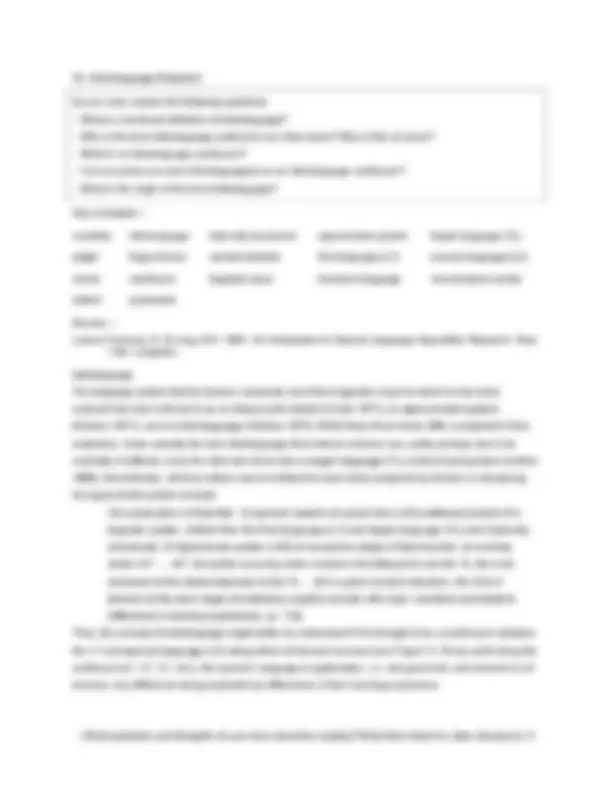
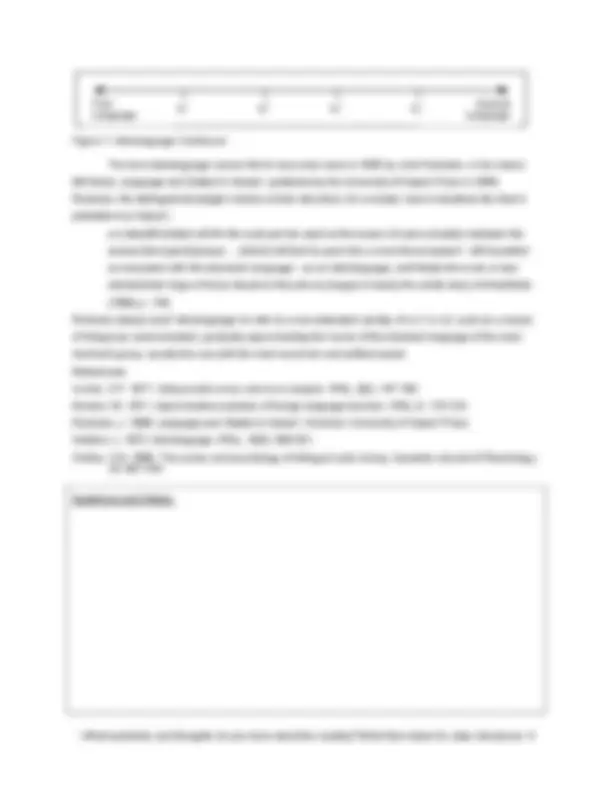
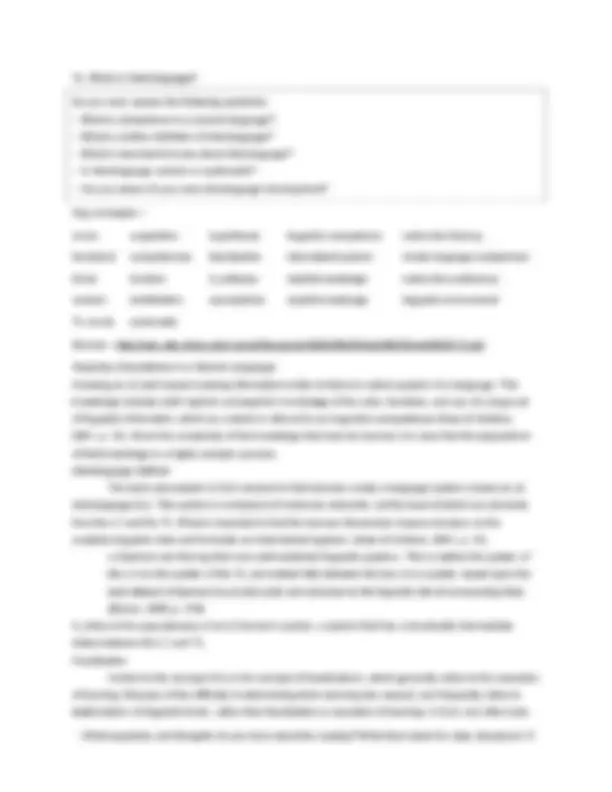


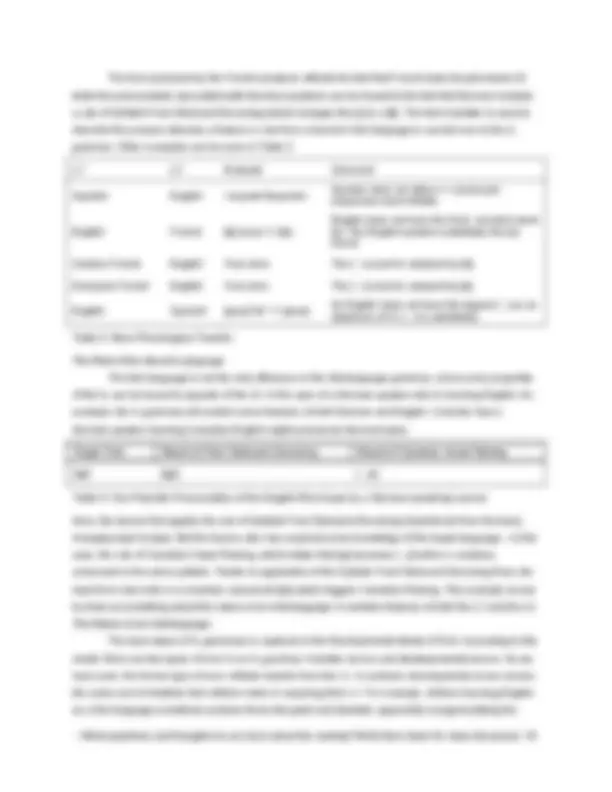
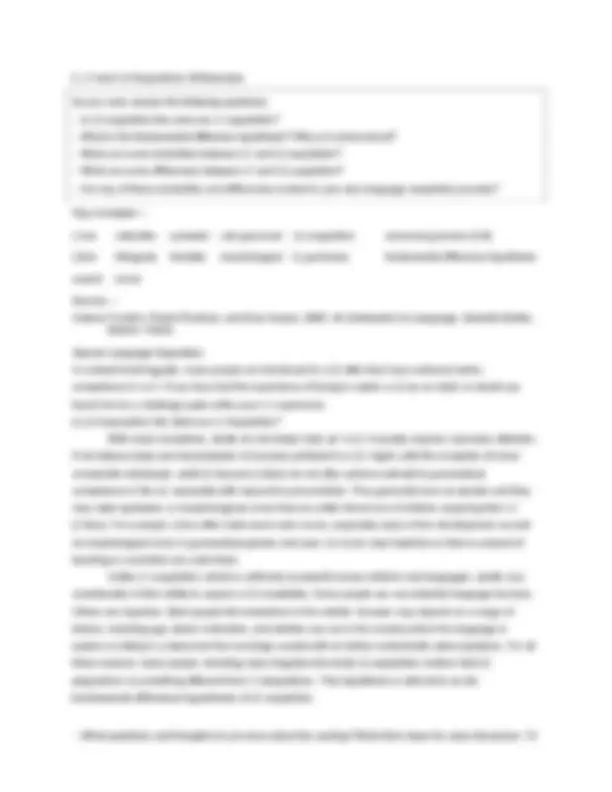
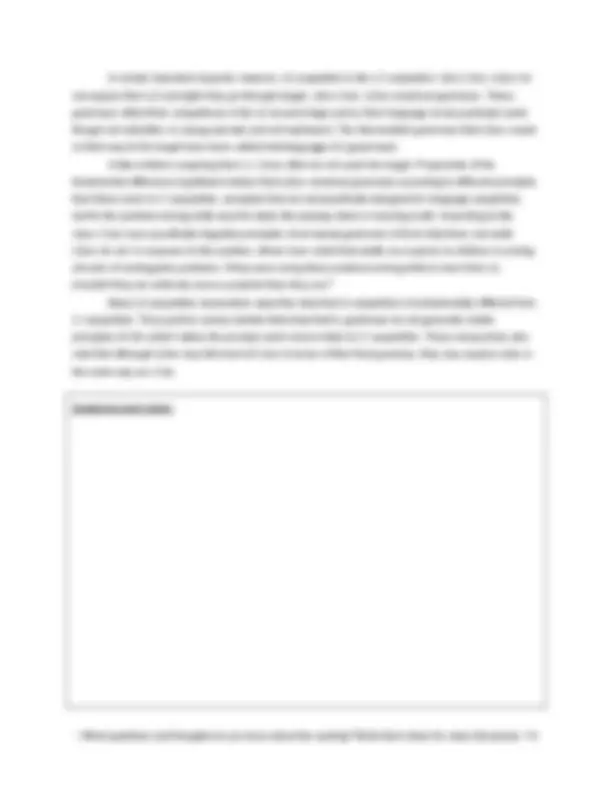
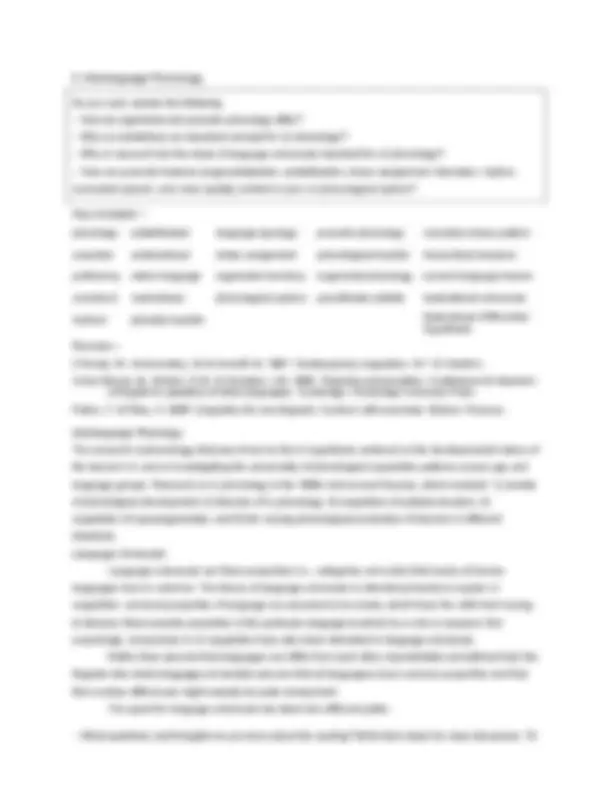
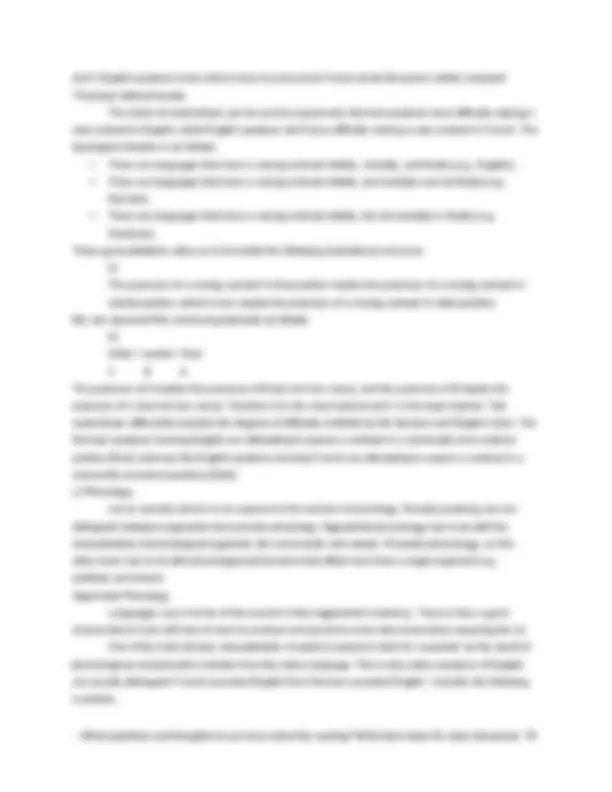
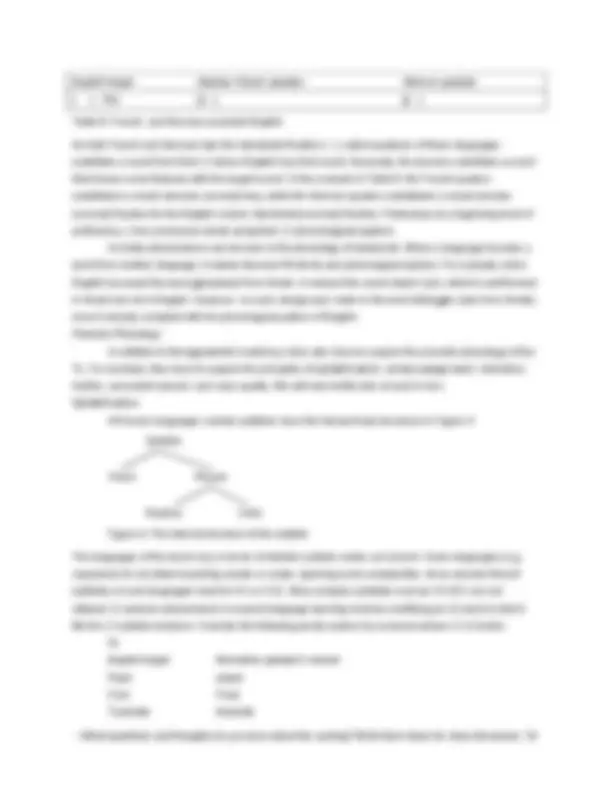
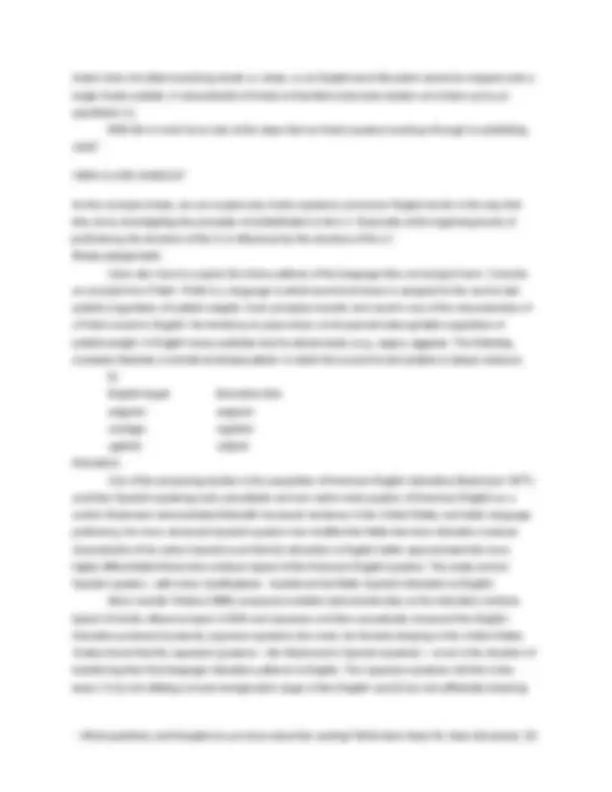
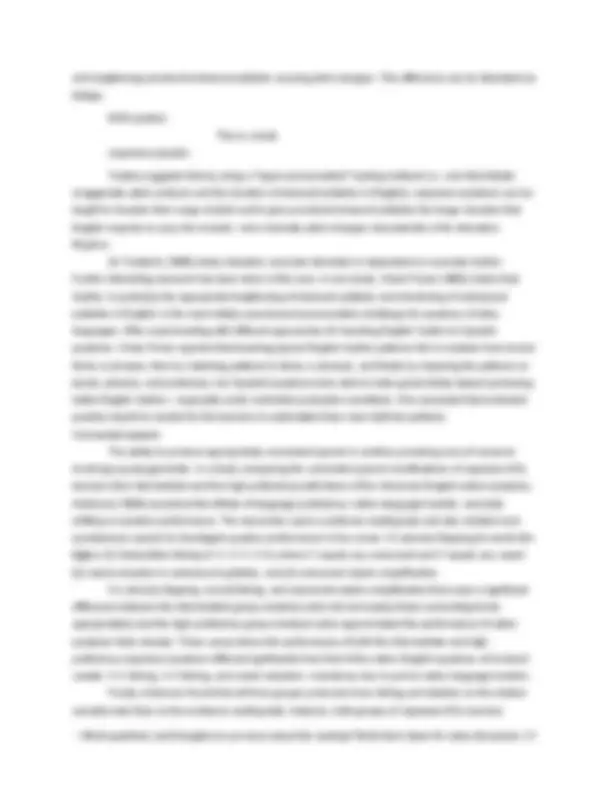
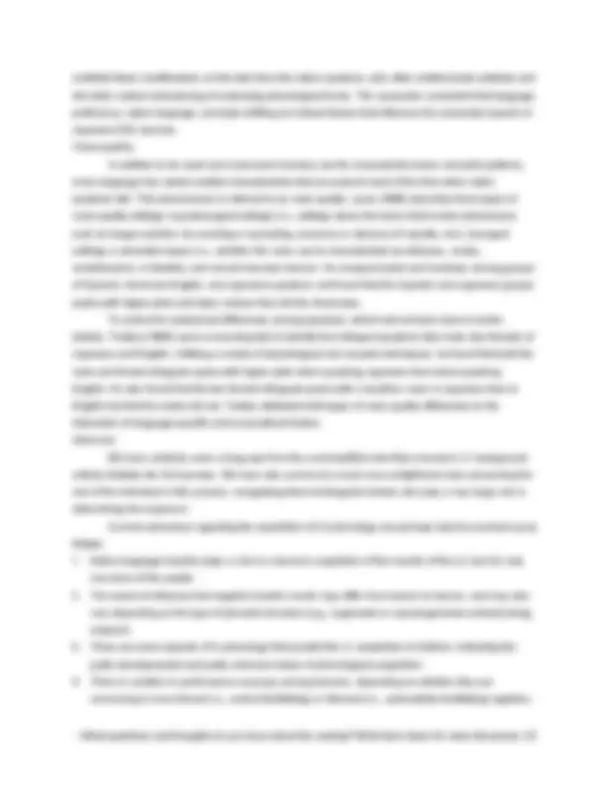
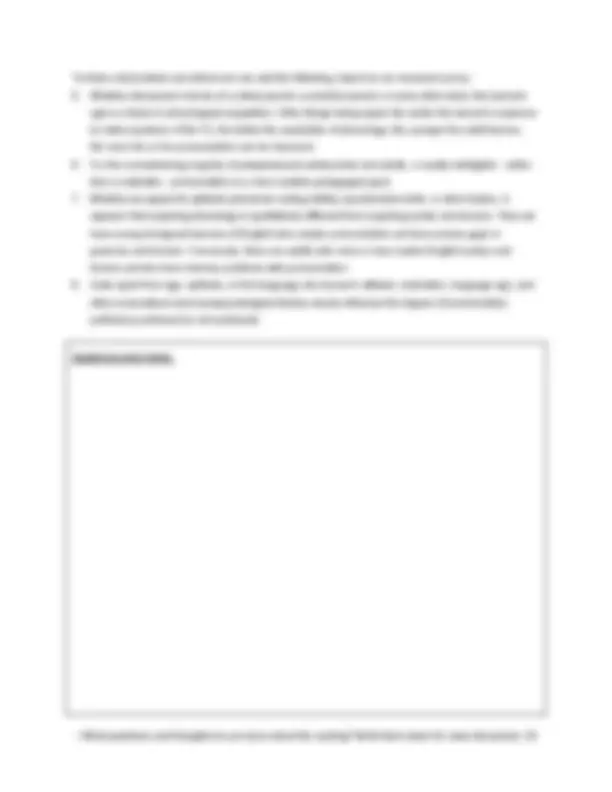
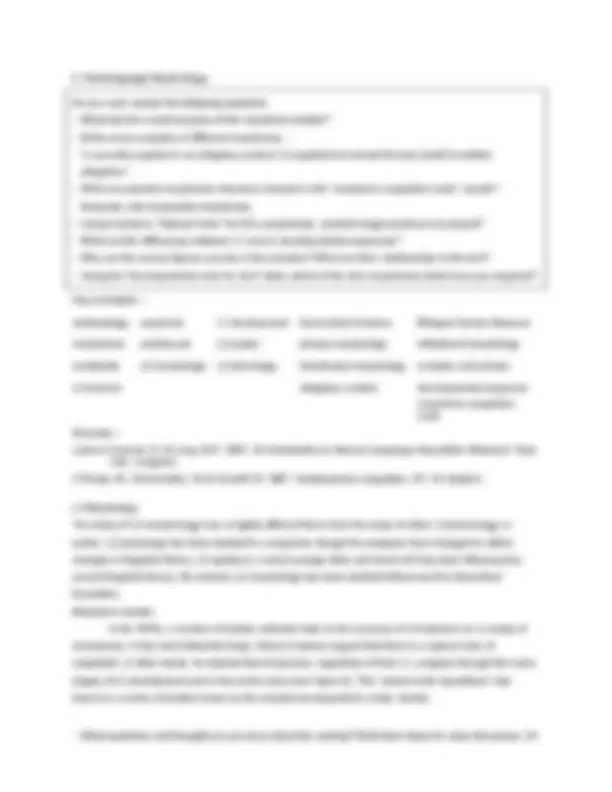
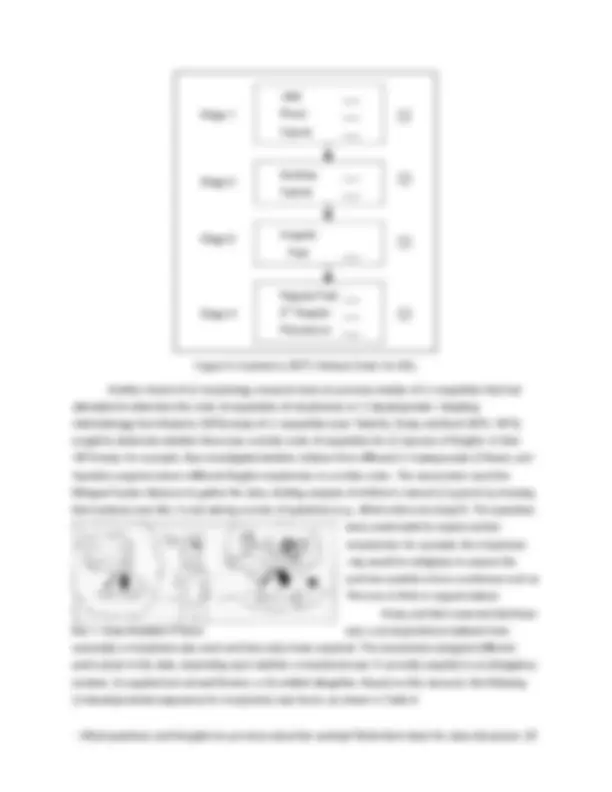
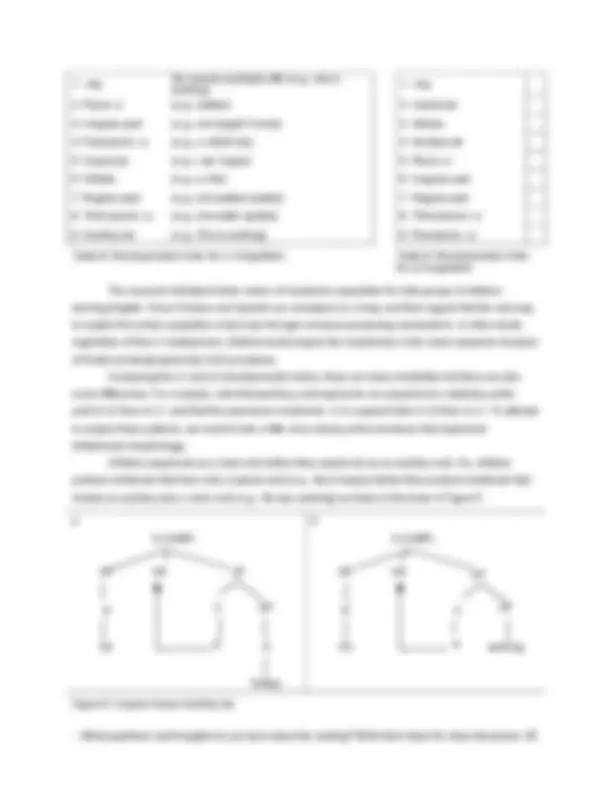
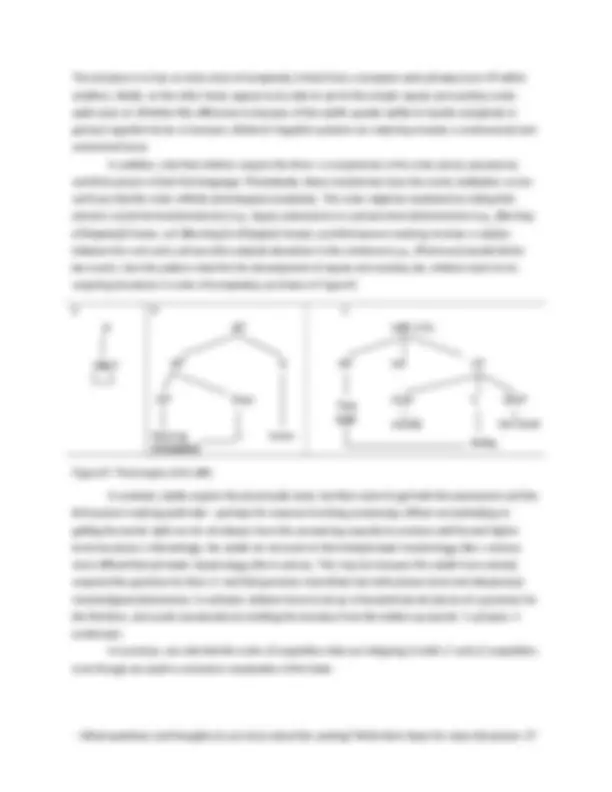

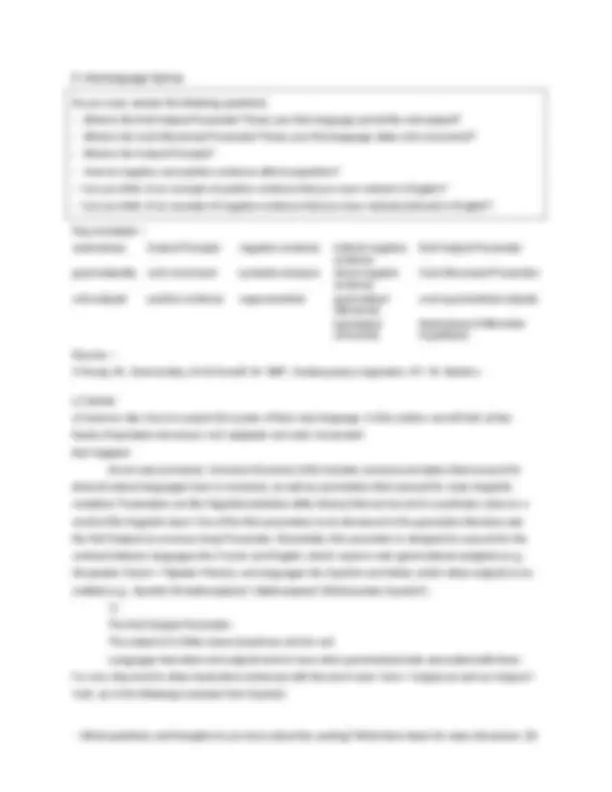
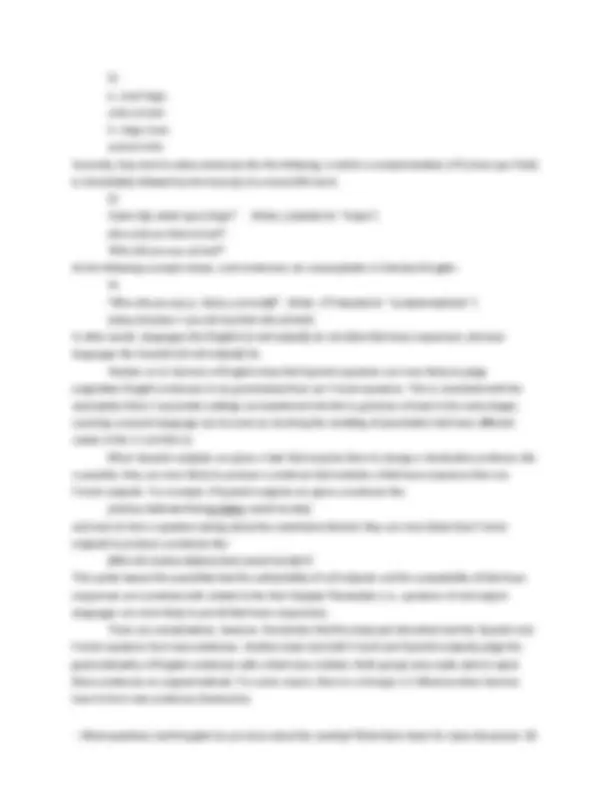
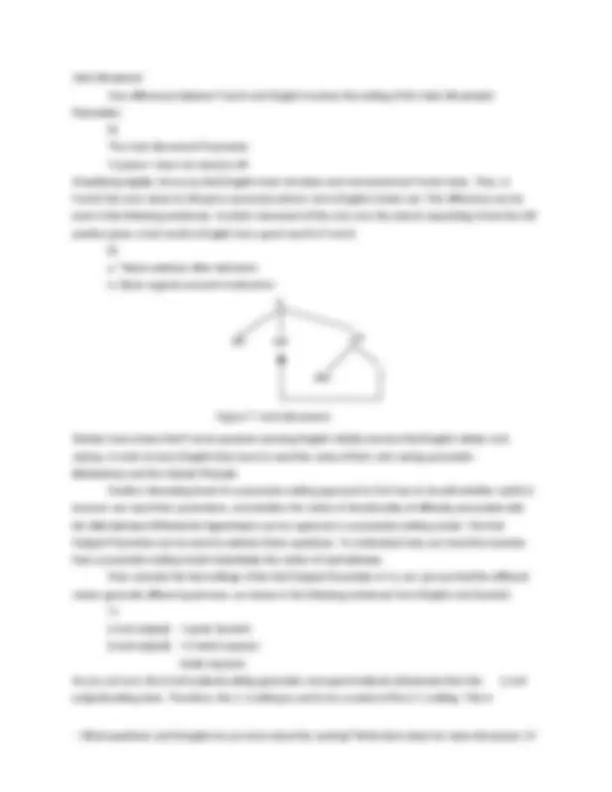
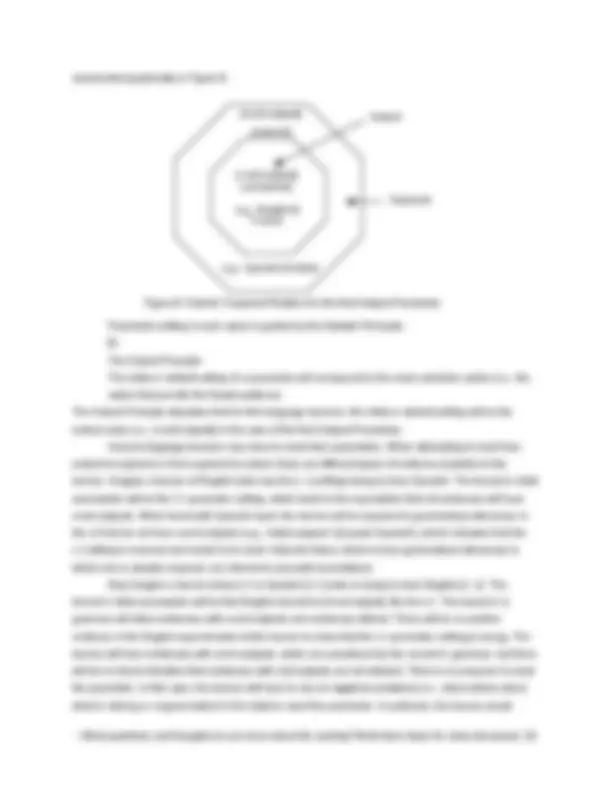
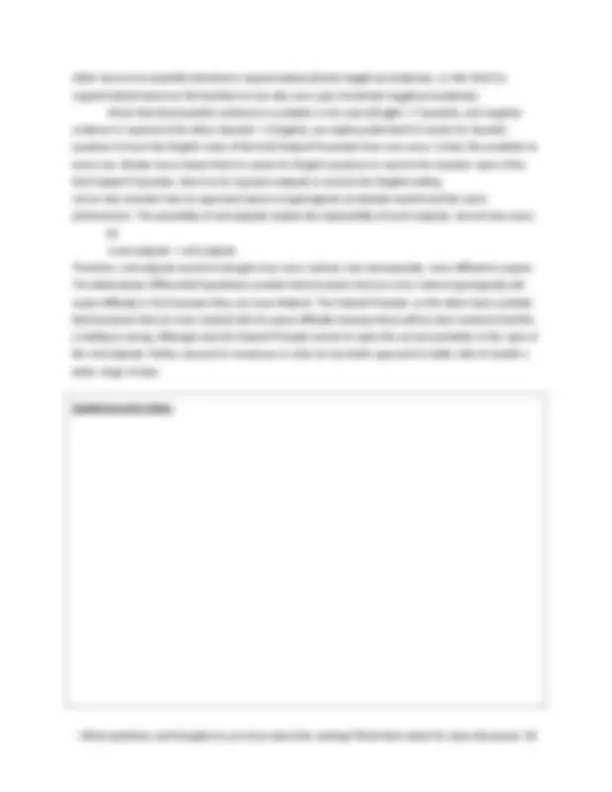
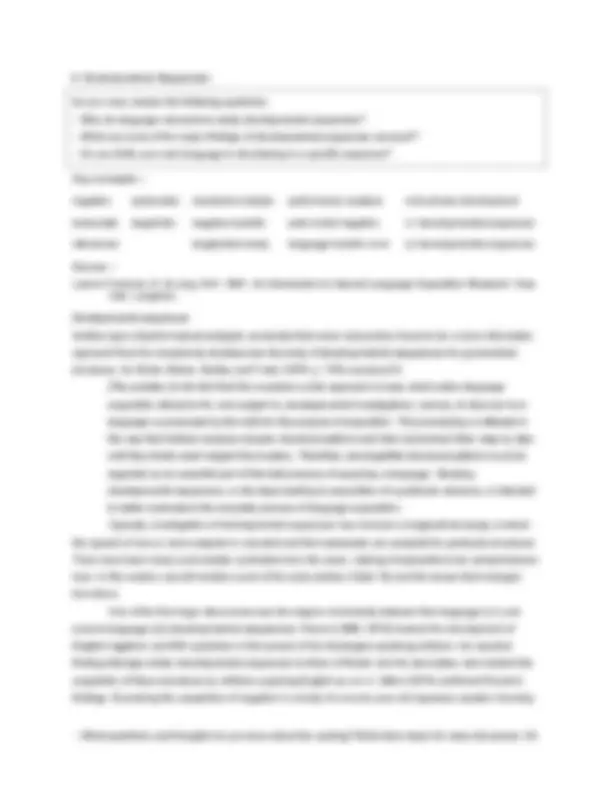
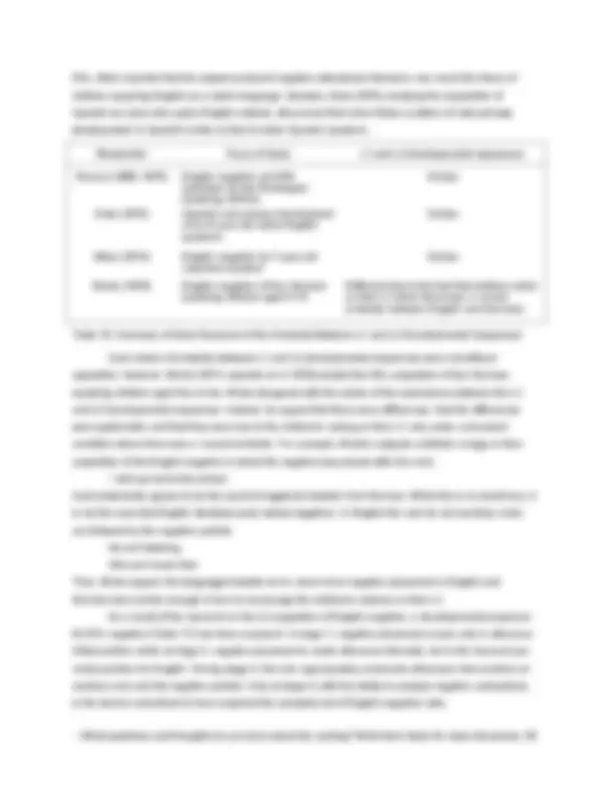
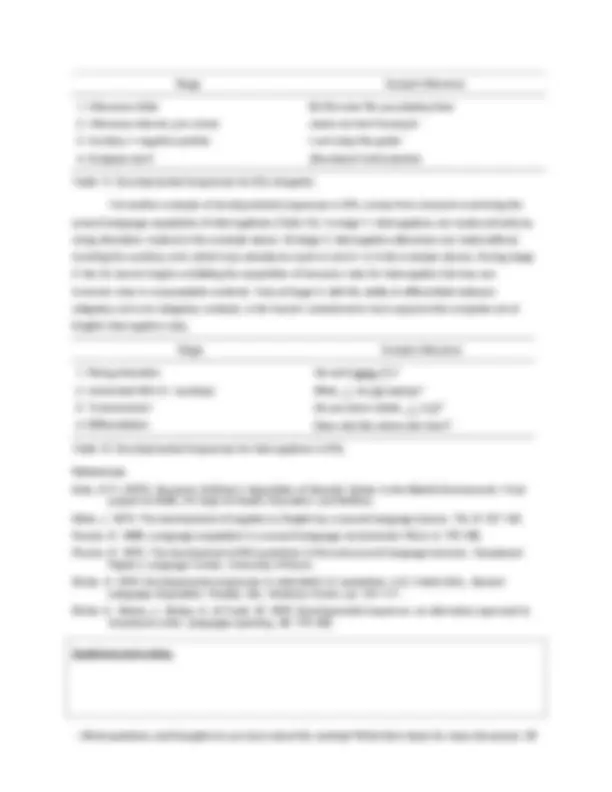
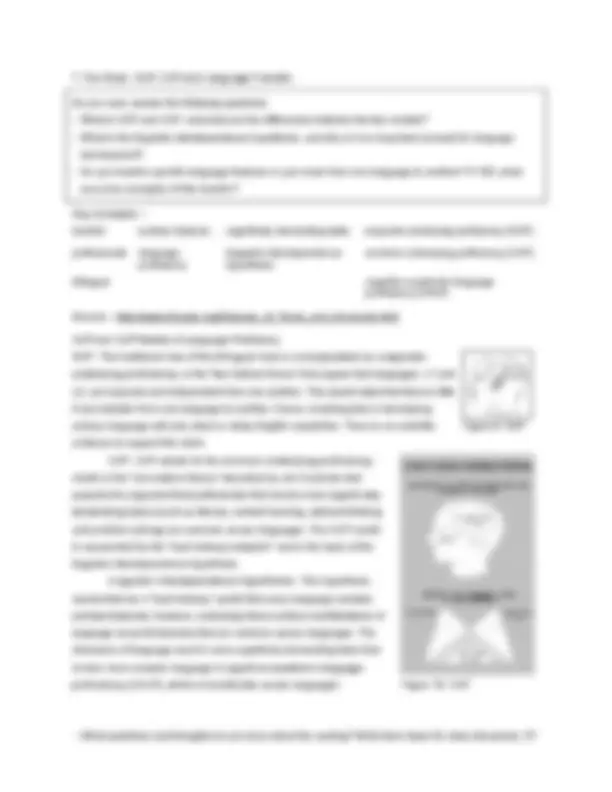
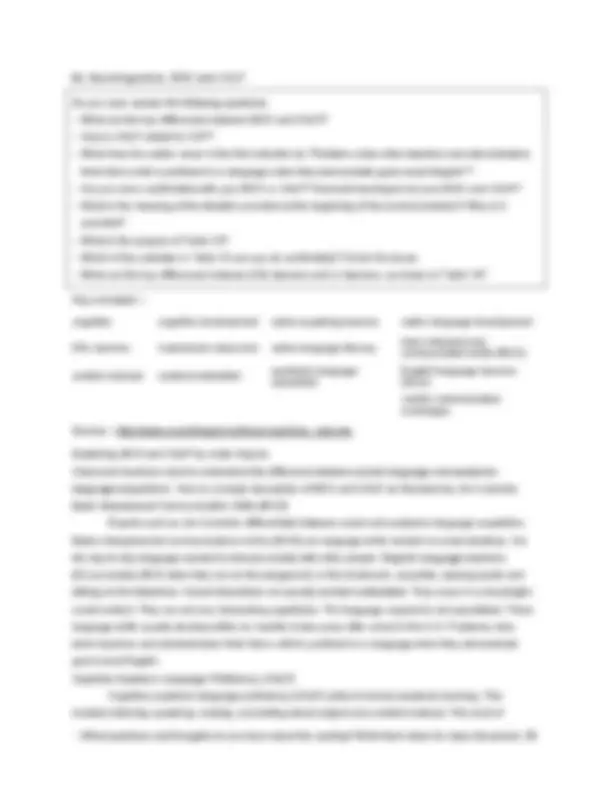
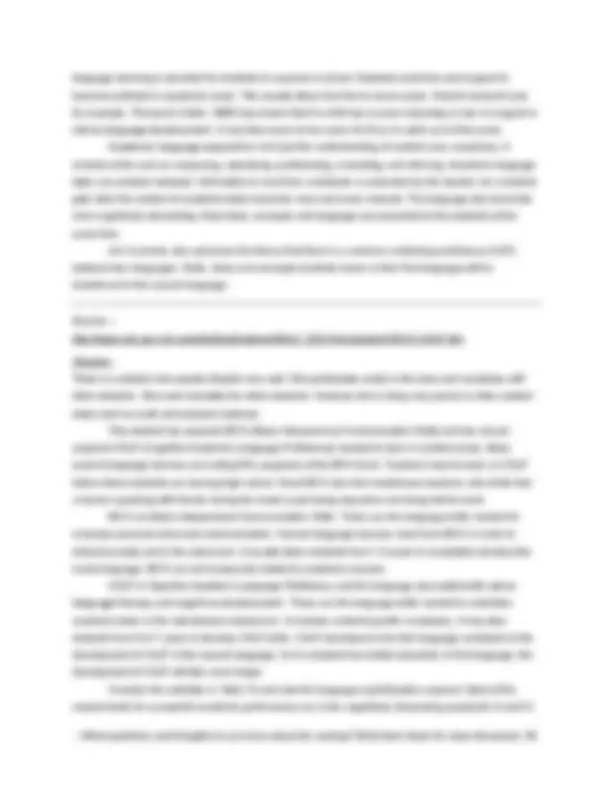
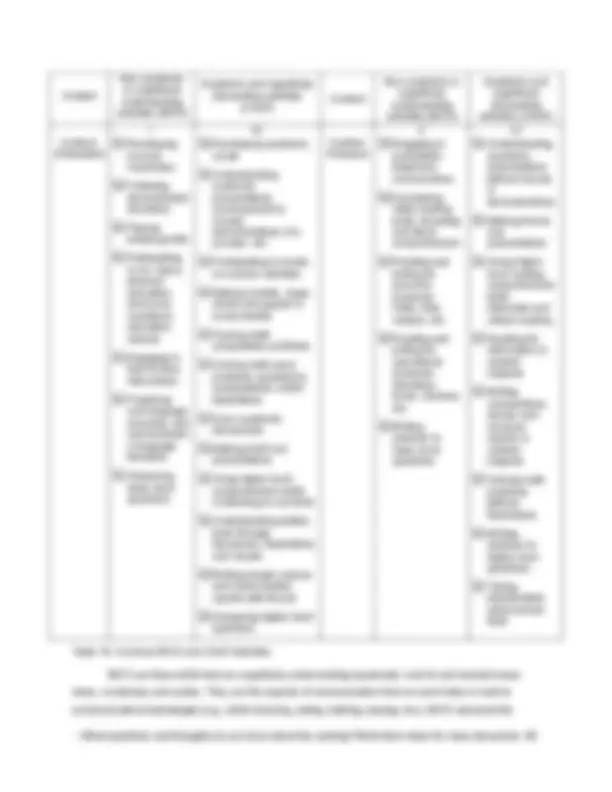
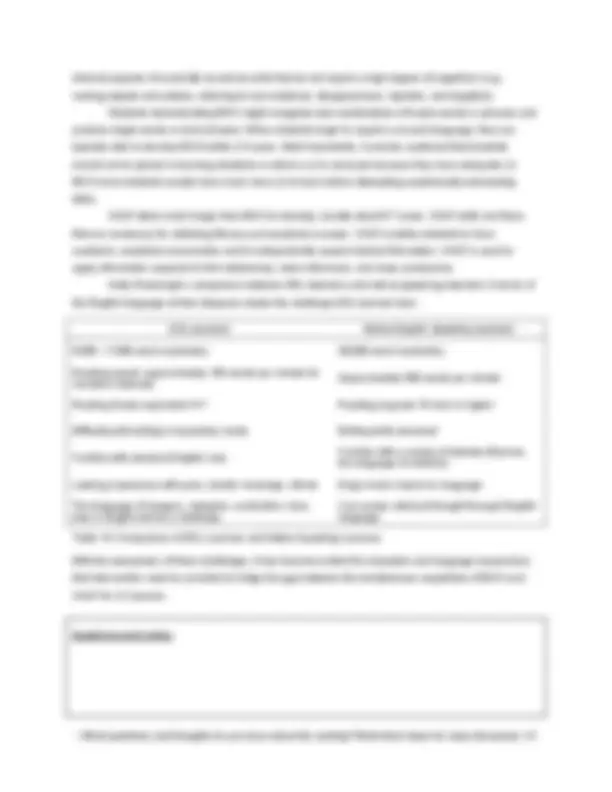
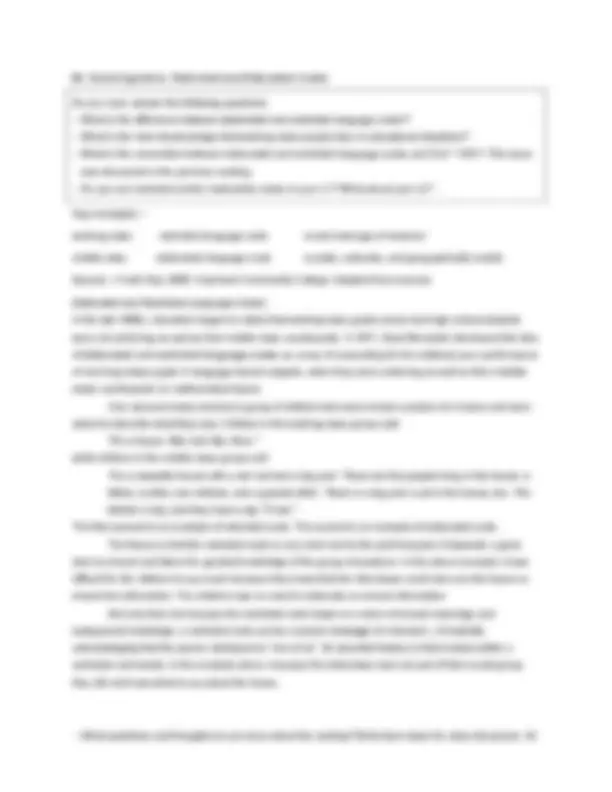
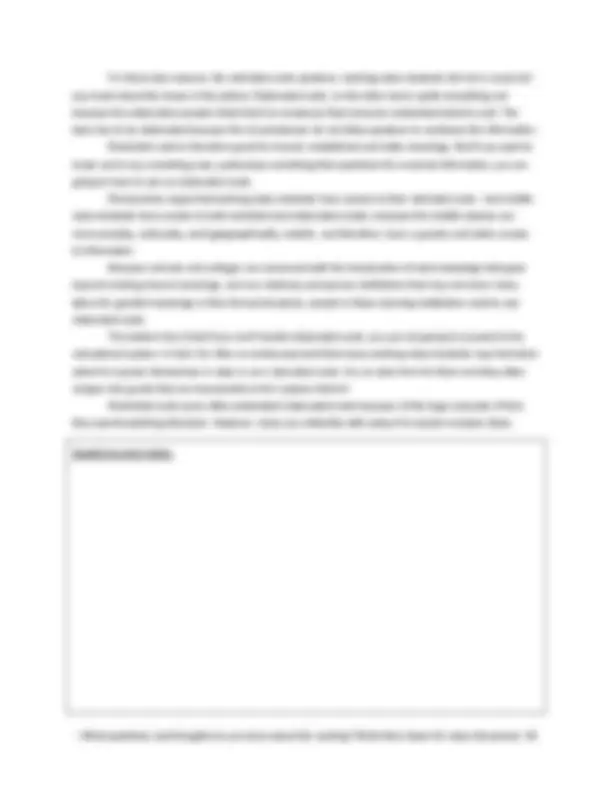
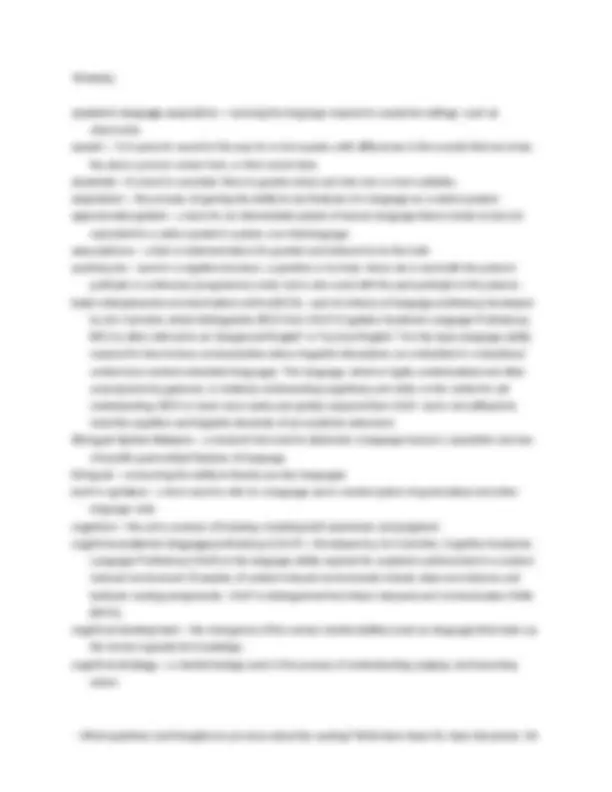
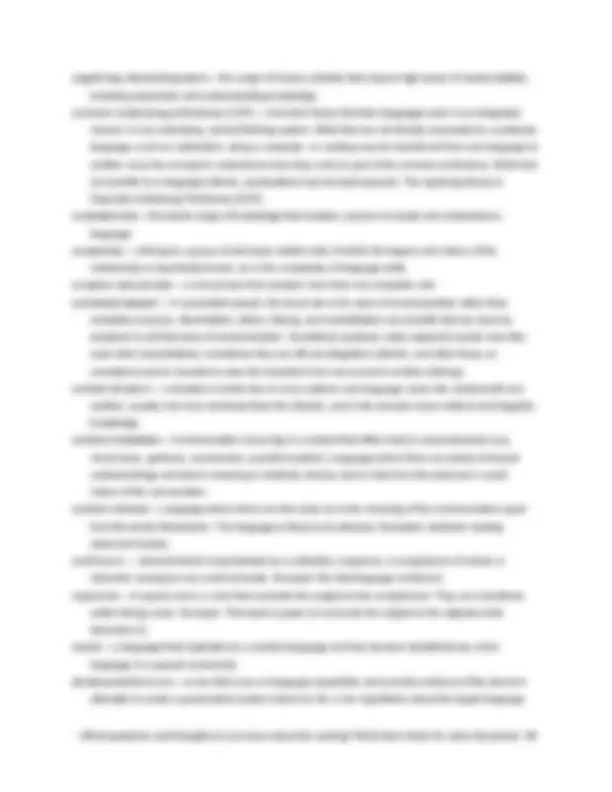
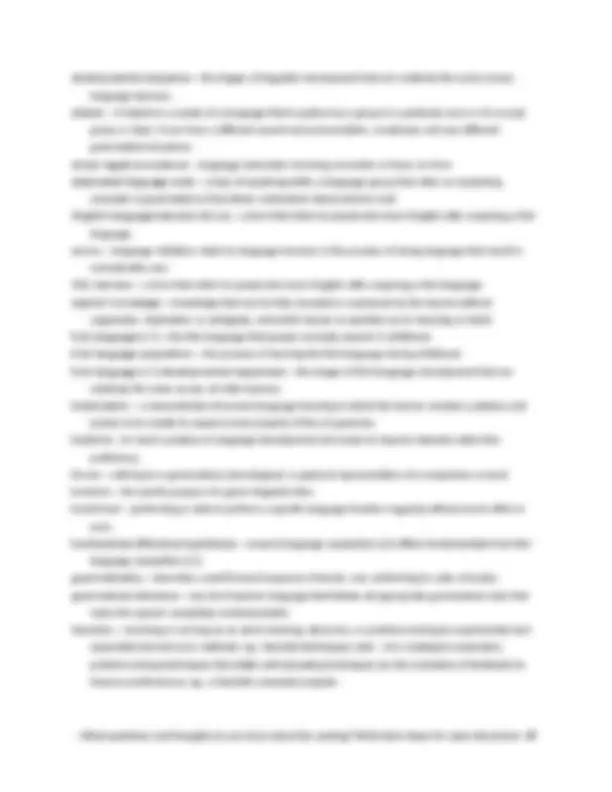
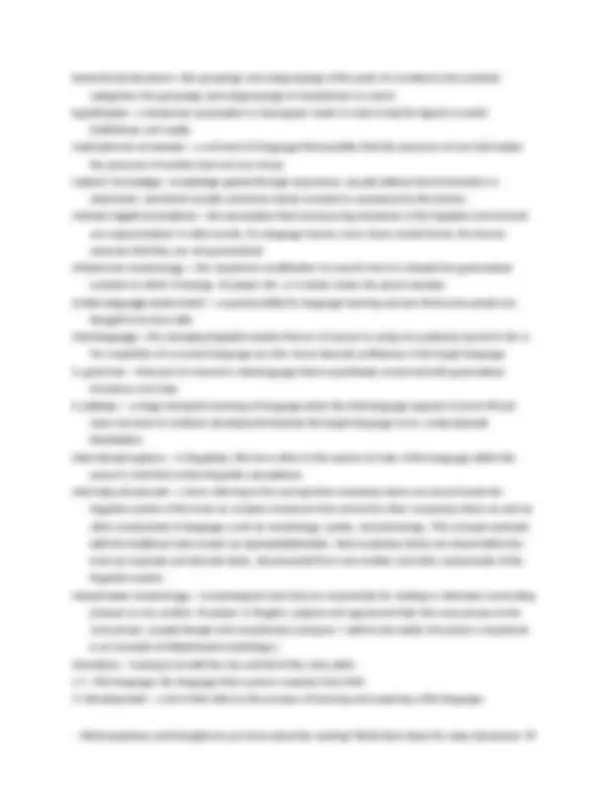
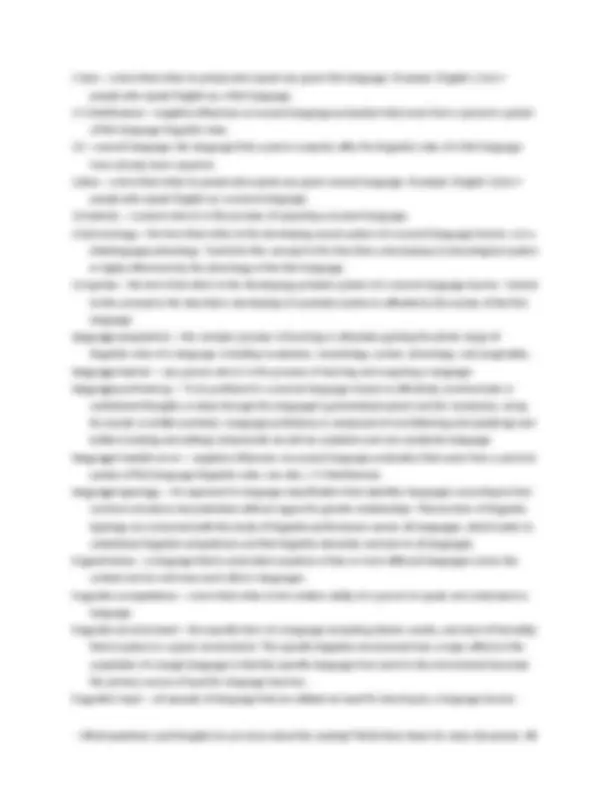
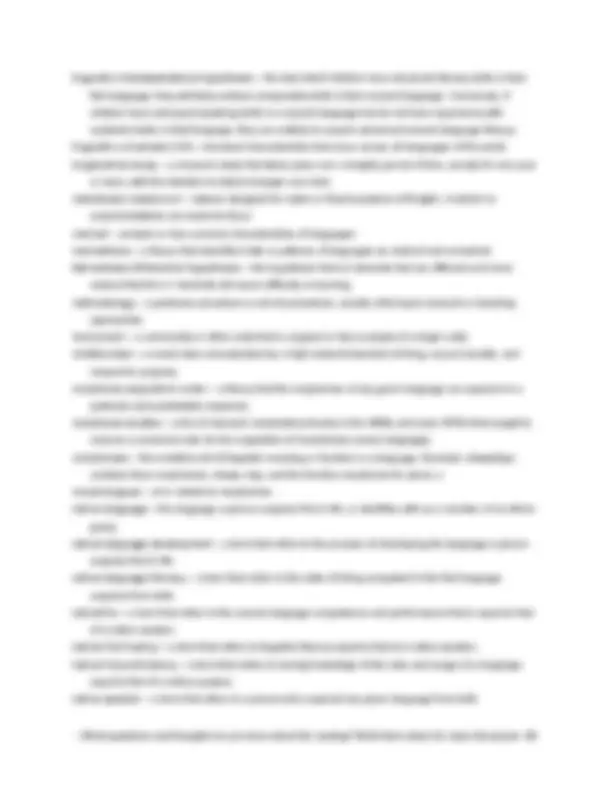
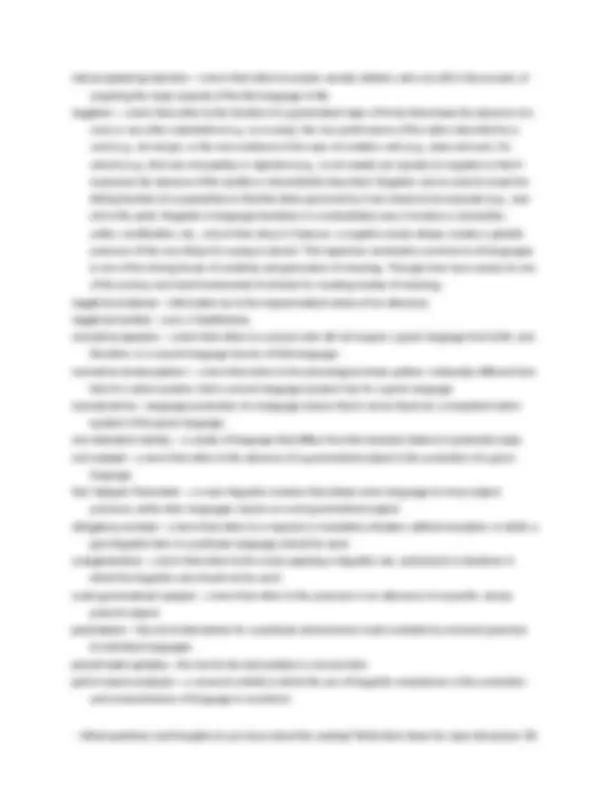
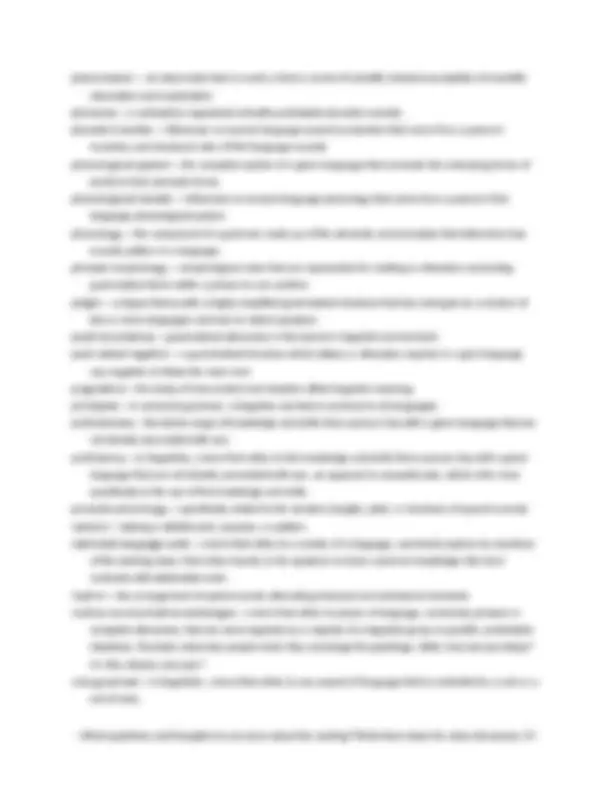
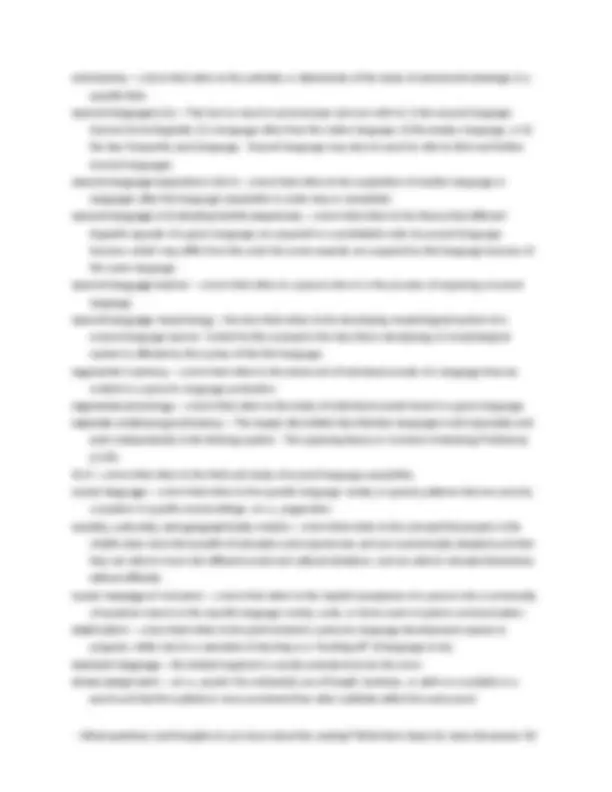
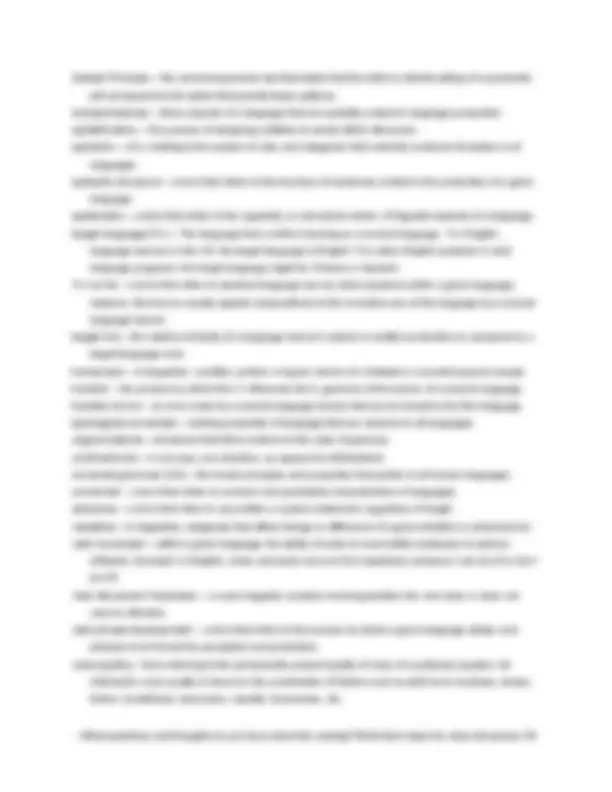



Study with the several resources on Docsity

Earn points by helping other students or get them with a premium plan


Prepare for your exams
Study with the several resources on Docsity

Earn points to download
Earn points by helping other students or get them with a premium plan
Community
Ask the community for help and clear up your study doubts
Discover the best universities in your country according to Docsity users
Free resources
Download our free guides on studying techniques, anxiety management strategies, and thesis advice from Docsity tutors
Material Type: Notes; Class: Expos Writ/Nonnative Speakers; University: University of Hawaii at Hilo; Term: Unknown 1989;
Typology: Study notes
1 / 54

This page cannot be seen from the preview
Don't miss anything!















































Word Up Learning Community ESL Component Reading Materials Compiled from various sources By Shawn Ford Readings
1a. Introduction to Interlanguage As you read, answer the following questions:
Figure 1: Interlanguage Continuum The term interlanguage seems first to have been used in 1935 by John Reinecke, in his classic MA thesis, Language and Dialect in Hawai‘i , published by the University of Hawai‘i Press in 1969. Reinecke, the distinguished pidgin / creole scholar describes, for example, how in situations like that in plantation-era Hawai‘i: a makeshift dialect will for the most part be used as the means of communication between the several [immigrant] groups ... [which] will tend to pass into a more formal speech - still imperfect as compared with the standard language - as an interlanguage, until finally this more or less standardized lingua franca becomes the primary tongue of nearly the whole body of inhabitants. (1969, p. 115) Reinecke always used 'interlanguage' to refer to a non-standard variety of a L1 or L2, used as a means of intergroup communication, gradually approximating the norms of the standard language of the most dominant group, usually the one with the most economic and political power. References Corder, S.P. 1971. Idiosyncratic errors and error analysis. IRAL, 9 (2), 147-159. Nemser, W. 1971. Approximative systems of foreign language learners. IRAL , 9, 115-123. Reinecke, J. 1969. Language and Dialect in Hawai‘i. Honolulu: University of Hawai‘i Press. Selinker, L. 1972. Interlanguage. IRAL, 10 (3), 209-231. Sridhar, S.N. 1980. The syntax and psychology of bilingual code mixing. Canadian Journal of Psychology, 34 , 407-416. Questions and Notes: First Language Second Language IL^1 IL^2 IL^3 IL n
1c. What is Interlanguage? As you read, answer the following questions:
Class Lecture Advanced language users are considered by linguists to have advanced knowledge of the following six competencies and 14 skills. Do you have advanced knowledge of these competencies and skills in your L1? What about your L2? Language competencies necessary for native-like fluency in a language:
Linguistic skills necessary for native-like fluency in a language:
Questions and notes:
1d. Fossilization As you read, answer the following questions:
The form produced by the French speakers reflects the fact that French lacks the phoneme /h/ while the pronunciation associated with German speakers can be traced to the fact that German includes a rule of Syllable Final Obstruent Devoicing (which changes the [v] to a [f]). The term transfer is used to describe the process whereby a feature or rule from a learner's first language is carried over to the IL grammar. Other examples can be seen in Table 2. L1 L2 Example Comment Spanish English I espeak Espanish. Spanish does not allow s + consonant sequences word-initially. English French [ty] (you) [tu] English does not have the front, rounded vowel [y]. The English speaker substitutes the [u] sound. Quebec French English Over dere. The [ ] sound is replaced by [d]. European French English Over zere. The [ ] sound is replaced by [z]. English Spanish [para] 'for' [para] As English does not have the tapped [ ] as an allophone of /r/, [ ] is substituted. Table 2: More Phonological Transfer The Role of the Second Language The first language is not the only influence on the interlanguage grammar, since some properties of the IL can be traced to aspects of the L2. In the case of a German speaker who is learning English, for example, the IL grammar will contain some features of both German and English. Consider how a German speaker learning Canadian English might pronounce the word eyes. Target Form Result of Final Obstruent Devoicing Result of Canadian Vowel Raising /ajz/ [ajs] [ js] Table 3: One Possible Pronunciation of the English Word eyes by a German-speaking Learner Here, the learner first applies the rule of Syllable Final Obstruent Devoicing (transferred from German), changing /ayz/ to [ays]. But the learner also has acquired some knowledge of the target language – in this case, the rule of Canadian Vowel Raising, which states that [aj] becomes [ j] before a voiceless consonant in the same syllable. Thanks to application of the Syllable Final Obstruent Devoicing Rule, the input form now ends in a voiceless consonant ([s]) which triggers Canadian Raising. This example serves to show us something about the nature of an interlanguage: it contains features of both the L1 and the L2. The Nature of an Interlanguage The dual nature of IL grammars is captured in the Developmental Model of SLA. According to this model, there are two types of error in an IL grammar: transfer errors and developmental errors. As we have seen, the former type of error reflects transfer from the L1. In contrast, developmental errors involve the same sort of mistakes that children make in acquiring their L1. For example, children learning English as a first language sometimes produce forms like goed and breaked, apparently overgeneralizing the
regular rule for past tense formation. A similar developmental error is observed in second language learners, who also overgeneralize rules as they acquire a grammar. It is possible that the processes of transfer and overgeneralization in L2 learning are the result of a single cognitive strategy that could be informalIy stated as "use what you know" or "go with what you have". This predicts that the kind of errors made by second language learners will be dependent on their level of proficiency. Beginning learners may have nothing to draw on but their L1. More advanced learners, however, have acquired a certain amount of knowledge about the L2 and this knowledge becomes a potential source of errors. This is illustrated in Table 4. Level of proficiency Transrer errors Developmental errors Beginner High low Intermediate Medium high Advanced Low low Table 4: Error Patterns in L2 Acquisition The predictions of the Developmental Model are illustrated in Figure 3. The number of transfer errors should decrease over time, whereas the number of developmental errors should be small initially but then should increase before finally decreasing.
Time Time Transfer Developmental Figure 3: Error Patterns Predicted by the Ontogeny Model The IL grammar, then, is influenced by both the L1 and the L2, though the proportion of influence is dependent on the learner's level of overall proficiency. Note that advanced learners have low numbers of both transfer and developmental errors. Not all learners, however, reach this advanced stage. It is common in second language acquisition for learners to reach a plateau in their development. For example, even after many years of exposure to English, a second language learner may still produce sentences like ‘ I don’t know what should I do’ (meaning 'I don't know what I should do') in spite of hearing the grammatical version from native speakers and perhaps being corrected. When the interlanguage grammar stops changing, it is said to have fossilized. Second language learners can exhibit nonnativelike characteristics in any linguistic domain, as can be seen in Table 5.
2. L1 and L2 Acquisition Differences As you read, answer the following questions:
In certain important respects, however, L2 acquisition is like L1 acquisition. Like L1ers, L2ers do not acquire their L2 overnight; they go through stages. Like L1ers, L2ers construct grammars. These grammars reflect their competence in the L2 at each stage and so their language at any particular point, though not nativelike, is rule-governed and not haphazard. The intermediate grammars that L2ers create on their way to the target have been called interlanguage (IL) grammars. Unlike children acquiring their L1, L2ers often do not reach the target. Proponents of the fundamental difference hypothesis believe that L2ers construct grammars according to different principles than those used in L1 acquisition, principles that are not specifically designed for language acquisition, but for the problem-solving skills used for tasks like playing chess or learning math. According to this view, L1ers have specifically linguistic principles of universal grammar ( UG ) to help them, but adult L2ers do not. In response to this position, others have noted that adults are superior to children in solving all sorts of nonlinguistic problems. If they were using these problem-solving skills to learn their L2, shouldn't they be uniformly more successful than they are? Many L2 acquisition researchers reject the idea that L2 acquisition is fundamentally different from L1 acquisition. They point to various studies that show that IL grammars do not generally violate principles of UG, which makes the process seem more similar to L1 acquisition. These researchers also note that although L2ers may fall short of L1ers in terms of their final grammar, they may acquire rules in the same way as L1ers. Questions and notes:
Markedness can be viewed in an implicational sense: since voiced stops imply the presence of voiceless stops, but not vice versa, voiced stops are considered marked and voiceless stops are considered unmarked. Markedness may also be viewed in a statistical sense: property X is more marked than property Y if X is rarer than Y. Under this definition, the interdental fricative / / is more marked than the alveolar fricative / s /, since / / occurs in fewer of the world’s languages. Markedness is commonly approached from the perspective of language typology , which is concerned with the comparative study of languages. Language researchers have discovered certain implicational universals of the form "if a language has x, it will also have y". For example, if a language has nasal vowels (e.g., [ a ]), then it will also have oral vowels (e.g., [ a ]). Significant to the understanding of implicational universals is the fact that the implication is unidirectional. Thus a language that has oral vowels does not necessarily have nasal vowels. This allows us to identify [ a ] as less marked than [ a ], in accordance with the following generalization.
X is more marked than y if the presence of x implies the presence of y , but not vice versa. It is interesting to ask whether IL grammars obey such implicational universals and whether this can tell us something about the question of ease and difficulty of learning. The Markedness Differential Hypothesis investigates second language acquisition in terms of typological universals by comparing the relative markedness of structures in the L1 and the L2. Take the example of Syllable Final Obstruent Devoicing in German, which explains why a word like hund ‘dog’ is pronounced with a [ t ] at the end. German speakers learning English typically transfer Syllable Final Obstruent Devoicing into their IL (producing [hæt] for [hæd] ‘had’) and must learn to make the contrast between [ t ] and [ d ] at the ends of words. We might be tempted to think that the principle underlying this phenomenon is something like "it's hard to learn to make contrasts that your L1 doesn't make". But when we look at another set of data we see that this is not the case. French makes a contrast between [ ] and [ ] in places where English does not, as Table 7 indicates. English [ ] / [ ] French [ ] / [ ] Initial sure [ ] / * [ ] chant ([ ]) / gens ([ ]) ‘song’ ‘people Medial assure ([ ]) / azure ([ ]) boucher ([ ]) / bouger ([ ]) ‘to fill up’ ‘to budge Final leash ([ ]) / liege ([ ]) hache ([ ]) / age ([ ]) ‘h’ ‘age’ Table 7: The [ ] and [ ] Contrast in English and French If it were invariably difficult for L2 learners to make contrasts that are not found in their L1, we would expect English speakers to have difficulty learning to produce [ ] at the beginning of words. But they
English target Quebec French speaker German speaker [ ] 'the' [d ] [z ] Table 6: French- and German-accented English As both French and German lack the interdental fricative [ ], native speakers of those languages substitute a sound from their L1 where English has that sound. Generally, the learners substitute a sound that shares some features with the target sound. In the example in Table 6, the French speaker substituted a voiced alveolar (coronal) stop, while the German speaker substituted a voiced alveolar (coronal) fricative for the English voiced, interdental (coronal) fricative. Particularly at a beginning level of proficiency, L1ers pronounce words using their L1 phonological system. A similar phenomenon can be seen in the phonology of loanwords. When a language borrows a word from another language, it makes the word fit into its own phonological system. For example, when English borrowed the word pterodactyl from Greek, it reduced the onset cluster [ pt ], which is well-formed in Greek but not in English. However, no such change was made in the word helicopter (also from Greek) since it already complied with the phonological pattern of English. Prosodic Phonology In addition to the segmental inventory L2ers also have to acquire the prosodic phonology of the TL. For example, they have to acquire the principles of syllabification , stress assignment , intonation, rhythm, connected speech, and voice quality. We will now briefly look at each in turn. Syllabification. All human languages contain syllables have the hierarchical structure in Figure 4. Syllable Onset Rhyme Nucleus Coda Figure 4: The internal structure of the syllable The languages of the world vary in terms of whether syllabic nodes can branch. Some languages (e.g., Japanese) do not allow branching onsets or codas. Ignoring some complexities, let us assume that all syllables in such languages must be CV or CVC. More complex syllables such as CCVCC are not allowed. A common phenomenon in second language learning involves modifying an L2 word so that it fits the L1 syllable structure. Consider the following words spoken by someone whose L1 is Arabic:
English target Nonnative speaker's version Plant pilanti Fred Fired Translate tiransilet
Arabic does not allow branching onsets or codas, so an English word like plant cannot be mapped onto a single Arabic syllable. A characteristic of Arabic is that illicit consonant clusters are broken up by an epenthetic [ i ]. With this in mind Iet us look at the steps that an Arabic speaker would go through in syllabifying ‘plant’. VIEW CLASS HANDOUT As this example shows, we can explain why Arabic speakers pronounce English words in the way that they do by investigating the principles of syllabification in the L1. Especially at the beginning levels of proficiency the structure of the IL is influenced by the structure of the L1. Stress assignment. L2ers also have to acquire the stress patterns of the language they are trying to learn. Consider an example from Polish. Polish is a language in which word-level stress is assigned to the next-to-last syllable (regardless of syllable weight). Such principles transfer and result in one of the characteristics of a Polish accent in English: the tendency to place stress on the penultimate syllable regardless of syllable weight. In English heavy syllables tend to attract stress (e.g., aroma , agenda ). The following examples illustrate a nonnative stress pattern in which the second to last syllable is always stressed.
English target Nonnative form astonish astonish maintain maintain cabinet cabinet Intonation. One of the pioneering studies in the acquisition of American English intonation (Backmann 1977) used two Spanish-speaking male consultants and one native male speaker of American English as a control. Backmann demonstrated that with increased residence in the United States and better language proficiency, the more advanced Spanish speaker had modified the flatter two-tone intonation contours characteristic of his native Spanish such that his intonation in English better approximated the more highly differentiated three-tone contours typical of the American English speaker. The newly arrived Spanish speaker - with minor modifications - transferred his flatter Spanish intonation to English. More recently Todaka (1990) compared available instrumental data on the intonation contours typical of similar utterance types in NAE and Japanese and then acoustically measured the English intonation produced by twenty Japanese speakers (ten male, ten female) studying in the United States. Todaka found that the Japanese speakers – like Backmann's Spanish speakers – erred in the direction of transferring their first-language intonation patterns to English. The Japanese speakers did this in two ways: (1) by not utilizing a broad enough pitch range in their English and (2) by not sufficiently stressing